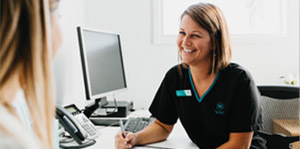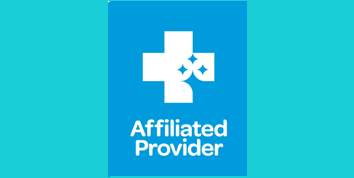Flexible Sigmoidoscopy
Flexible Sigmoidoscopy is a procedure which allows the doctor to see inside your rectum and the lower part of the large bowel (the sigmoid colon). The endoscopist will examine the lining of the bowel directly using a colonoscope (a long, thin flexible tube which has a light source and camera built into it). The colonoscope is placed into your anal canal and the doctor then guides it through the rectum and into the left side of your large bowel while viewing the images on a video screen. A sedative may be given if required.
The doctor will look for any areas that seem abnormal and will take biopsies (small samples of tissue) if needed. Removal of polyps and treatment of bleeding or haemorrhoids/piles can also be undertaken. Any tissue samples that are taken are sent to the laboratory for examination.
Your doctor may suggest you have a flexible sigmoidoscopy if you have experienced any of the following problems:
- Changes in bowel habit
- Diarrhoea or constipation
- Bleeding from the bowel or haemorrhoids
- Rectal/anal pain
- Previous treatment for polyps or bowel cancer
- Ulcerative colitis or Crohns disease
Rarely complications can occur after a flexible sigmoidoscopy. They can include:
- Perforation (tearing) of the bowel wall by the colonoscope which can cause leakage into the abdomen, especially after endoscopic therapies such as biopsies, polypectomy, diathermy or dilatations
- Bleeding may occur from the site of the biopsy or polyp removal
- Allergic reaction to the sedative
- A polyp or lesion can be missed
- If haemorrhoids are treated, bleeding can occur
If you would like further clarification of these complications please discuss them with your specialist or nurse.
What Happens?
It is important that the rectum is completely empty of faecal material for the procedure to be thorough and safe. If it is not entirely clean certain areas may be obscured. The preparation for a flexible sigmoidoscopy procedure will involve making changes to your diet for a day prior to the procedure. We will send you specific information regarding this. Then when you are at your appointment, prior to your procedure a nurse will administer an enema into your rectum which will allow you to empty all faecal material from your lower bowel and enable the doctor to get clear views of the lining of your bowel wall. All the instructions are given in a written patient information and appointment letter and phone support is available.
In addition, it is important to inform Waitemata Endoscopy prior to your procedure if you have any of the following:
- An allergy or bad reaction to medicines or anaesthetics
- Take medication to thin your blood including dabigatran/pradaxa, clopidogrel, or warfarin
- Prolonged bleeding/clotting disorders or excessive bleeding
- Diabetes
- Heart and lung problems including artificial heart valves and pacemakers
- Artificial hip or knee joint replacements
- If you are pregnant or breast-feeding
On admission into Waitemata Endoscopy your medical history is recorded by a nurse and further information regarding the procedure is given. A consent form is discussed and signed indicating that you understand the procedure and complications involved and consent to have the procedure performed. You will then be asked to change into a hospital gown, and will have the enema administered, which will give you the urge to pass a bowel motion. Once this has worked your nurse will assess whether this needs to be repeated once or twice.
In the procedure room you may be given medication (a sedative and a pain medication) to make you sleepy and drowsy. The endoscopist will discuss with you whether you require this or not. The medication will be given by a small injection into a vein in your arm or hand. The flexible sigmoidoscopy can take 10 to 15 minutes and you will be assisted and observed by two nurses. Your heart rate and oxygen levels will be monitored during the procedure. The colonoscope is gently inserted into the bowel which is inflated with C02 to obtain a good view.
After the procedure you will be wheeled into the recovery area. If you have been given a sedative, you will be given time to sleep this off. The endoscopy nursing staff will continue to monitor you until you are awake enough to get dressed and be given light refreshments. If you have been given sedation you are not allowed to drive a car, operate machinery or make any important decisions for 12 hours as the sedation will impair your reflexes and judgement. Therefore you will need to arrange for someone else to drive you home and it is recommended to have an adult with you at home afterwards. You are not able to take public transport alone after a sedative.
If biopsies or polyps are taken for examination, your GP and specialist will be sent the results. Your specialist will review the results and will send you a letter, which may take up to 2-4 weeks depending on when the sample results are received from the lab. A medical typed report of the procedure will be sent to your GP and specialist. Follow-up information and recommendations will be given by the specialist prior to discharge from Waitemata Endoscopy.



